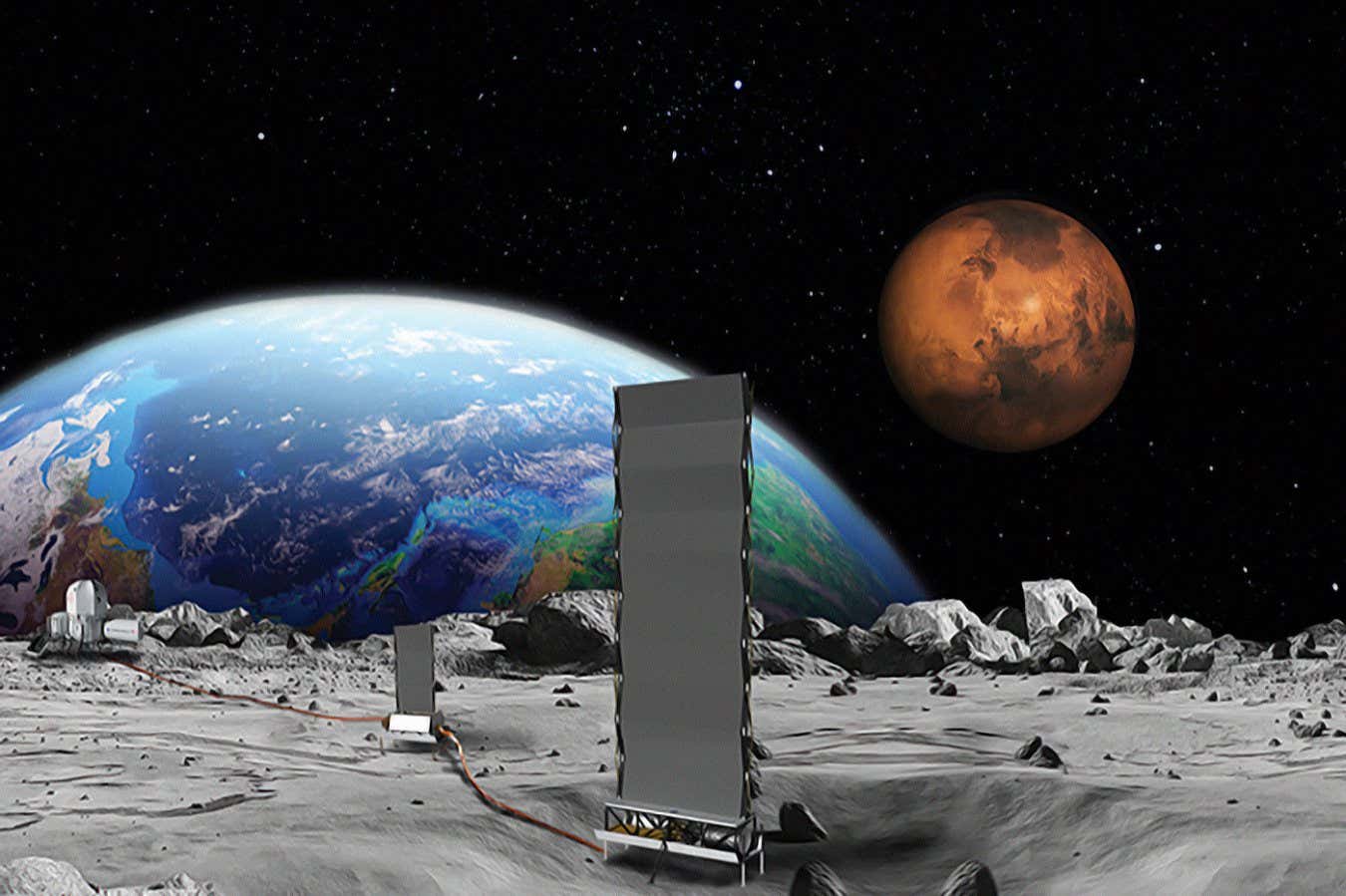Science
NASA Plans Lunar Nuclear Reactor by Mid-2030s Amid Global Competition

NASA has announced plans to construct a nuclear reactor on the Moon by the mid-2030s. This ambitious initiative was outlined by the agency’s acting administrator, Sean Duffy, and is part of a broader strategy to enhance lunar exploration and potential human settlement. Although the concept is not entirely new—NASA awarded contracts in 2022 for smaller reactor designs—Duffy’s directive aims to accelerate development significantly.
The proposed lunar reactor is expected to generate at least 100 kilowatts of electrical power, enough to supply around 80 average American homes. While this capacity may seem modest when compared to terrestrial reactors, the primary envisioned application is to support long-term human habitation on the Moon. Nonetheless, establishing a permanent lunar presence is still a considerable distance away, contingent upon the success of NASA’s ongoing Artemis program, which aims for a crewed lunar landing in 2027.
Challenges remain prominent, particularly in light of recent budget cuts and staffing changes at NASA. Reports indicate that approximately 20 percent of the workforce has opted to leave as part of a deferred resignation program initiated during the Trump administration. Moreover, proposed budget reductions could reach 24 percent, which may severely impact the agency’s science initiatives, including the cancellation of various missions and the decommissioning of operational spacecraft.
Duffy’s directive raises critical questions regarding the feasibility of establishing a nuclear reactor on the Moon, particularly during a time when funding for NASA is in jeopardy. It is unclear what immediate benefits such a reactor would provide, especially given that the timeline for a human settlement remains uncertain.
A significant motivation behind Duffy’s announcement appears to be geopolitical competition. In a statement, he emphasized the urgency of the situation, noting that since March 2024, both China and Russia have publicly committed to a joint effort to deploy a lunar reactor by the mid-2030s. Duffy warned that the first nation to establish such a facility could potentially create a “keep-out zone” on the Moon, which could hinder U.S. plans to establish a presence through the Artemis program.
The notion of a legal “keep-out zone” raises complex questions under international law. The Outer Space Treaty prohibits any claims of sovereignty over celestial bodies, while the more recent Artemis Accords outline “safety zones” for space operations. However, since neither China nor Russia has signed the Accords, the prospect of enforcing such zones remains uncertain.
During a press conference on August 5, Duffy highlighted the South Pole region of the Moon as a prime location for exploration, where resources like ice and sunlight are abundant. He stated, “We want to get there first and claim that for America.” While the motivation for establishing a lunar nuclear reactor may include strategic interests, the legal implications of claiming territory on the Moon remain ambiguous.
As NASA pushes forward with this initiative, the fundamental question persists: what is the actual purpose of deploying a nuclear reactor on the Moon at this time? The lack of clarity regarding its intended uses and the significant hurdles in funding and international cooperation suggest that this project will require careful navigation in the coming years.
-

 Lifestyle2 weeks ago
Lifestyle2 weeks agoLibraries Challenge Rising E-Book Costs Amid Growing Demand
-

 Lifestyle1 week ago
Lifestyle1 week agoSave Your Split Tomatoes: Expert Tips for Gardeners
-

 Sports1 week ago
Sports1 week agoLiverpool Secures Agreement to Sign Young Striker Will Wright
-

 Lifestyle1 week ago
Lifestyle1 week agoPrincess Beatrice’s Daughter Athena Joins Siblings at London Parade
-

 Science1 week ago
Science1 week agoTom Lehrer, Pioneering Satirist and Musician, Dies at 97
-

 World4 days ago
World4 days agoWinter Storms Lash New South Wales with Snow, Flood Risks
-

 World1 week ago
World1 week agoSwingathon Festival Draws Nearly 1,000 Attendees in Allington
-

 Lifestyle1 week ago
Lifestyle1 week agoNigeria Claims 10th African Championship Title with Victory Over Morocco
-

 Politics1 week ago
Politics1 week agoNorth Dakota Woman Dies in Lake Crash Following Highway Incident
-

 Science2 weeks ago
Science2 weeks agoTrump Administration Moves to Repeal Key Climate Regulation
-

 Business2 weeks ago
Business2 weeks agoSoFi Technologies Shares Slip 2% Following Insider Stock Sale
-

 Entertainment2 weeks ago
Entertainment2 weeks agoKendra Scott Engages Zac Brown, Expands Family with Stepchildren








